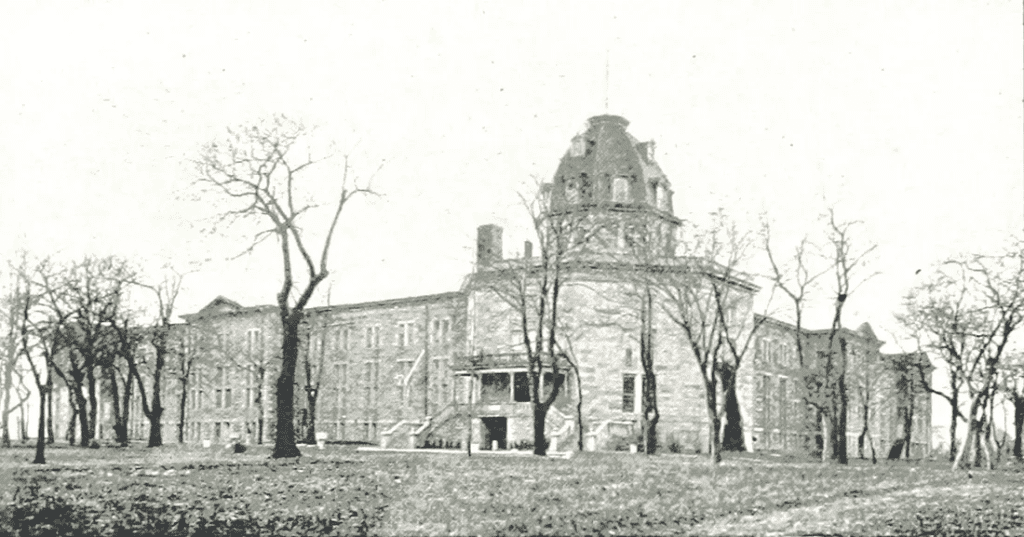Nellie Bly’s Bold Crusade: Exposing the Horrors of Blackwell’s Island Asylum
We can often learn that truth is often more interesting than fiction. In my quest to share interesting history, curiosities, and unsolved mysteries from around the globe, I also want to make sure that I am sharing articles about key figures in history, that did amazing and interesting things to help our society.
This article is going to focus on an amazing woman who was an investigative reporter that lived in the 19th and early 20th century.
This post contains affiliate links, to view the full disclosure click here.
A Woman of Courage
In the late 19th century, amidst the shadowy depths of the Blackwell’s Island insane asylum, Nellie Bly embarked on a courageous mission that would forever change the landscape of journalism and mental health treatment. Her daring expose, published in Joseph Pulitzer’s New York World, shed light on the horrific conditions endured by the institution’s inmates
As a woman deeply concerned about mental health and the humane treatment of individuals in psychiatric facilities, Bly’s actions resonate deeply with me.
The Journey Begins: Inside Blackwell’s Island Asylum
Imagine the scene: a young woman, only 23 years old, poses as a mental patient to gain entry into the asylum. Her name is Nellie Bly, a pioneer in investigative journalism, and she is about to uncover the dark underbelly of institutionalized mental health care in 1887 New York City.
Bly, born Elizabeth Cochrane, was no stranger to adversity. Raised in Pennsylvania, she began her career in journalism writing fiery editorials under the pen name “Nellie Bly,” taken from a Stephen Foster song. Her determination and fearlessness soon caught the attention of Joseph Pulitzer, who entrusted her with the dangerous assignment of exposing the asylum’s horrors.
A Glimpse of Horror: The Reality of Asylum Life
Bly’s experience inside the asylum was nothing short of harrowing. From the cries of despair echoing through the halls to the inedible food and ice-cold baths, she bore witness to the suffering of her fellow inmates. But it wasn’t just the physical conditions that appalled her; it was the systematic abuse and neglect inflicted upon vulnerable individuals, many of whom were perfectly sane but wrongly confined.
Voices of the Silenced: Exposing Abuse and Neglect
As she delved deeper into the asylum’s grim reality, Bly encountered stories of brutality that shook her to the core. Women like Mrs. Cotter and Bridget McGuinness recounted tales of beatings, druggings, and unimaginable cruelty at the hands of the staff. It was a stark reminder of the pervasive mistreatment endured by those deemed mentally ill during that era.
Taking Action: Nellie Bly’s Fearless Advocacy
Armed with her pen and unwavering determination, Bly took action. Her exposé, “Ten Days in a Mad-House,” exposed the asylum’s horrors to the world, sparking outrage and catalyzing much-needed reforms. City officials, spurred by public outcry, launched investigations and allocated additional funds to improve conditions within the institution.
Positive Changes After The Expose
- Improved Conditions: City officials, spurred by public outcry and Bly’s revelations, implemented reforms to improve living conditions within the asylum. This included addressing issues such as food quality, cleanliness, and the treatment of inmates.
- Increased Oversight: Bly’s expose prompted increased oversight and scrutiny of mental health facilities. City officials and regulatory bodies began conducting more frequent inspections to ensure that standards of care were being upheld and that inmates were treated with dignity and respect.
- Allocation of Funds: In response to the public outcry sparked by Bly’s expose, additional funds were allocated to mental health institutions. This allowed for improvements in staffing, infrastructure, and resources, ultimately leading to better care for inmates.
- Policy Changes: Bly’s reporting also led to policy changes aimed at protecting the rights of individuals with mental illness. Laws and regulations were enacted to safeguard against abuse and ensure that inmates received proper medical treatment and support.
- Public Awareness: Perhaps most importantly, Bly’s expose raised public awareness about the plight of those suffering from mental illness. Her courageous reporting helped to destigmatize mental health issues and sparked important conversations about the need for compassionate and effective treatment options. For a first hand account you can read her work here about what happened.
Brief Video About Nellie and Her Expose
Honoring a Trailblazer
Today, as we honor Nellie Bly with a memorial on Roosevelt Island, we pay tribute to her legacy as a trailblazer for women in journalism and a champion for the rights of the marginalized. Her bravery and tenacity serve as a beacon of hope for those fighting for a more just and compassionate society. Let us carry her spirit forward as we continue the fight for a more compassionate and equitable society for all. Nellie Bly’s reporting on the conditions inside Blackwell’s Island Asylum was a pivotal moment in journalism history. For a deeper look into the evolution of investigative journalism, books like The Investigative Reporter’s Handbook provide invaluable insights. Check out this guide if you’re looking to dive into the world of investigative journalism.




